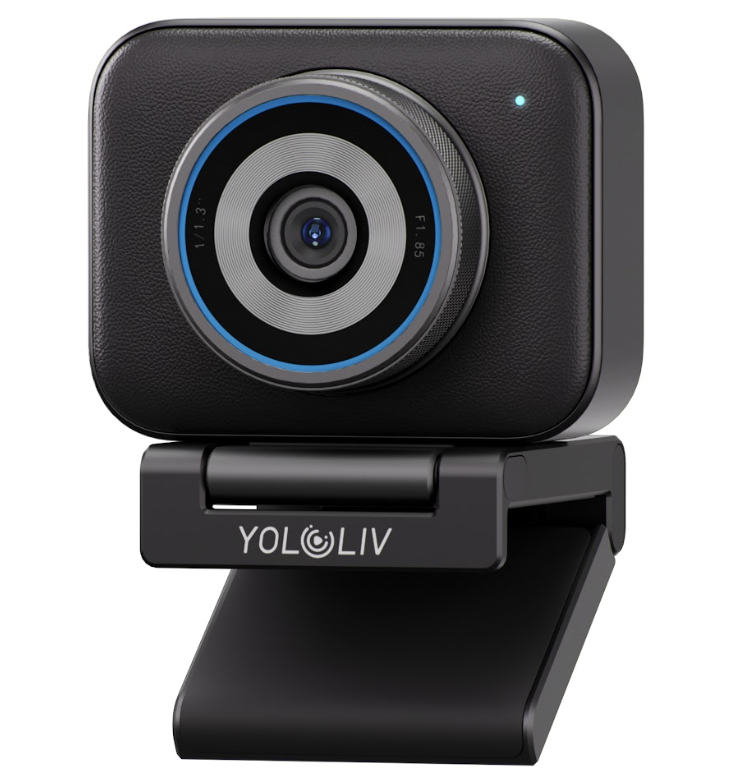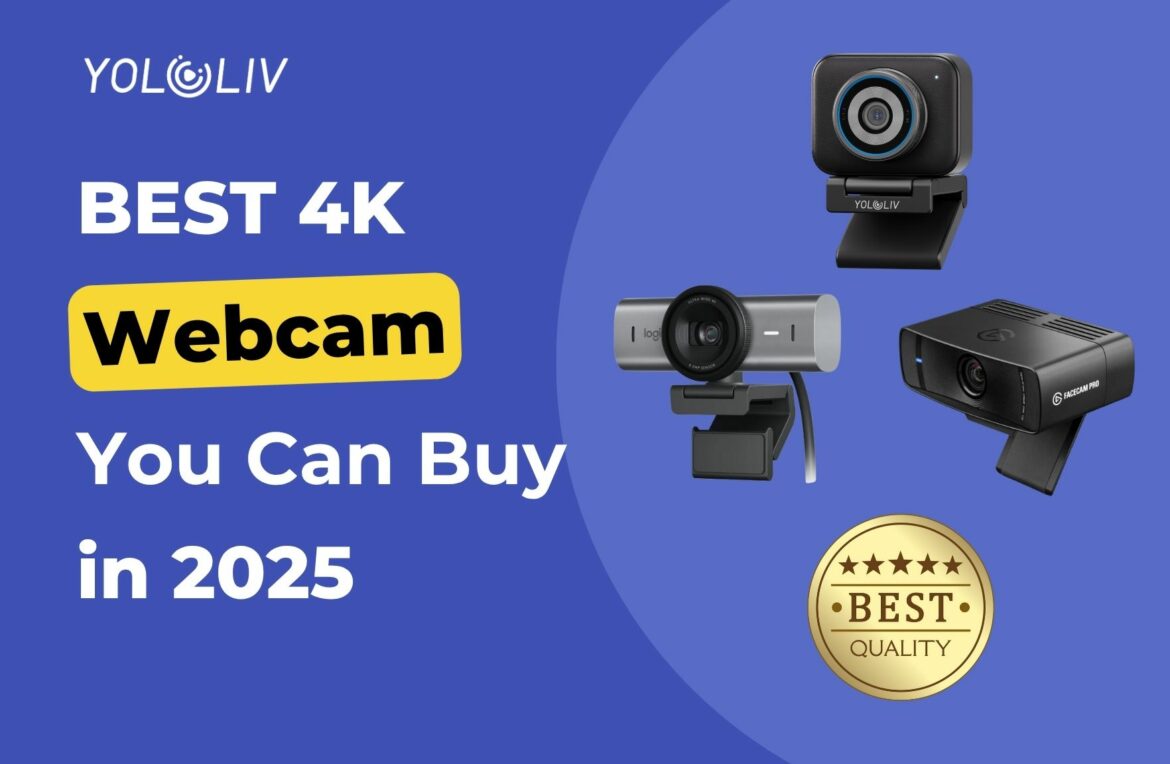Going to 4K is more than just more pixels. As we enter 2025, not all webcams are created equal — especially when it comes to 4K. Many models advertise “4K” on the box, but the real-world experience can vary drastically depending on sensor size, frame rates, autofocus speed, software support, and even heat management. That’s why choosing the right 4K webcam requires looking beyond resolution alone.
In this guide, we’ll explore what actually makes a webcam worth buying in 2025, the key features to watch for, and our picks for the best 4K webcams available right now — whether you’re live streaming, presenting on Zoom, or recording high-quality video content.
What Makes a Great 4K Webcam
Sensor Size & Image Processing
A large sensor (or at least a fairly large one for webcams) helps in low light, offering better dynamic range and less noise. Also, HDR and good image processing pipelines are essential so that standout bright/dark areas are handled properly.
Frame Rate & Bandwidth
Many 4K webcams are still only 30fps at 4K due to USB bandwidth, compression, heat, etc. If you need 4K/60fps (for smoother motion, action, or streaming), there are few but high-end models. Also, some webcams downsample or crop for certain modes, so checking what modes are supported matters.
Autofocus, White Balance, Exposure, and Adaptability
Lighting conditions vary a lot: natural daylight, indoor lights, backlight, etc. A 4K webcam that can adjust quickly (autofocus, auto-exposure, auto-white-balance), or offer manual control, will produce much better results in real-world scenarios.
Field of View (FOV) & Framing Options
Wide FOV is useful when to show more of your environment or for group calls; narrower when you want tight framing and less distortion. Some webcams even offer digital zoom, or changeable lenses or framing via software.
Build, Mounting & Hardware Features
Physical qualities matter: good lens cover/privacy shutter; solid mount/clip; USB-C vs older USB types; whether the webcam gets hot and how that affects performance. Also, extra features like built-in microphones, gimbals or motorized pan/tilt, AI tracking or gesture controls can add value—but often at cost.
Software & Ecosystem
Good companion software that lets you tweak exposure, color correction, framing, tracking, etc., makes a big difference—without it, even good hardware can produce mediocre output. Also how well the webcam works across platforms (Windows, macOS, maybe even Linux) and streaming tools.
What to Watch Out For (Trade-Offs)
- Heat & Noise: Higher resolution + high frame rate = more power consumption and more heat. Poor designs can lead to overheating which degrades performance or causes shutdowns.
- USB Bandwidth Limitations: Sometimes 4K webcams compress heavily or downsample to maintain high frame rates. This can reduce image quality.
- Mic Quality vs. External Mics: Many 4K webcams have usable built-in mics, but top creators often still put in external mics for better sound. Don’t assume the built-in mic will be broadcast-quality.
- Lighting Dependency: Unless you have strong ambient or supplemental lighting, very few webcams look great in dim conditions—even at 4K.
- Price vs. Perceived Value: If your output ends up downscaled (e.g. video calls on platforms that only accept 1080p), some of the “benefits” of 4K may not be visible to others—even though better sensors still help.
Top Models of 2025 That Are Leading the Pack
Here are some of the webcams people are talking about a lot in 2025, which combine many of the above strengths:
| Model | Picture | Specification | What Makes It Strong | What Might Be the Compromise | Price |
|---|---|---|---|---|---|
| Logitech MX Brio |  | 1/1.8″ CMOS 4K30 for MJPEG/YUY2 Aperture: f/2.0 FOV: 90° | Excellent image quality, HDR, multiple FOV settings, reliable build, great audio for a webcam. | Big size, small sensor, possibly overkill if you only do Zoom calls. | $199 |
| YoloCam S3 |  | 1/1.3″ CMOS Aperture: f1.85 PDAF 4K30 for MJPEG/H.264/NV12 Effective Pixels: 50M FOV: 82° Equivalent Focal Length: 24mm | Superb 4K quality with large sensor, ultra-fast autofocus, pro color grading, 24/7 non-stop streaming, 1080p output in 4x Digital Zoom; very well reviewed for both creative and professional use. | No built-in mic (if you rely on webcam for audio you’ll need a separate mic). | $199 |
| Insta360 Link 2C |  | 1/2″ sensor 4K30 for MJPEG/H.264 Aperture: f1.8 FOV: 79.5° | Strong sensor, AI tracking, excellent framing, noise reduction, great 4K output with sharpness and clarity. | Built-in mic isn’t stellar; some of the AI framing/tracking features may need tweaking or have latency in borderline setups. | $199 |
| Elgato Facecam Pro |  | 1/1.8″ CMOS 4K60 for /MJPG; 4K30 for YUY2/NV12 Focal Length: 21mm FOV: 90° | Extensive manual controls, sharp image quality Wide, bright lens, good out-of-the-box performance. | High price, a lack of a built-in microphone, and potentially distracting autofocus | $299 |
| Razer Kiyo Pro Ultra |  | 1/2″ CMOS 4K30 for MJPEG/H.264/NV12 FOV: 82° Focal Length: 27mm | Excellent 4K image quality, integrated privacy shutter, great auto-exposure, and white balance. | Expensive, narrow focus plane, mediocre microphone, too big for some scenarios | $399 |
Our Recommendations: Best Picks by Use Case
- For content creators & streamers who want top image quality and smooth motion: go for models that offer crisp 4K + large sensor, good HDR with good price (e.g. YoloCam S3, Logitech MX Brio).
- For remote work / meetings: you may not need all the bells & whistles—focus instead on webcam with good auto exposure, color balance, reliable mic (or external), and maybe something mid-range that looks clean and professional.
- For on-location or mobile setups: prioritize size, mount flexibility, USB-C (for power/data), possibly battery options, and stable autofocus/tracking.
- For budget shoppers wanting 4K: expect compromises (lower frame rate, smaller sensor, less premium lens or fewer extras). But there are some solid “value 4K” models emerging.
What’s Coming / Trends to Keep an Eye On
- More webcams with motorized pan / tilt / gimbal-style tracking even in mid-tier models.
- Better AI auto-framing / gesture control / adaptive exposure especially for hybrid work or fluctuating light.
- More webcams supporting 4K at higher frame-rates, or sending uncompressed or better compressed video for streaming.
- Lens accessory support (e.g. filters, wider lenses) becoming more common as users seek DSLR-like control. Elgato Facecam 4K, for example, is pioneering support for external lens filters.
Conclusion
In 2025, a “good” 4K webcam isn’t just about resolution. The best ones are built around strong sensors, excellent image processing, adaptability (lighting, framing, exposure), and dependable hardware/firmware/software combos.
If you’re investing in a 4K webcam, start by thinking what you really need (streaming, content creation, meetings, mobility) and then prioritize features that enhance real world video—not just spec sheets. A well-chosen mid/high 4K webcam will serve you far better than a spec-heavy webcam with weak autofocus, awful low light handling, or sluggish tracking.
10,463 total views, 231 views today

Meredith, the Marketing Manager at YoloLiv. After getting her bachelor’s degree, she explores her whole passion for YoloBox and Pro. Also, she contributed blog posts on how to enhance live streaming experiences, how to get started with live streaming, and many more.


